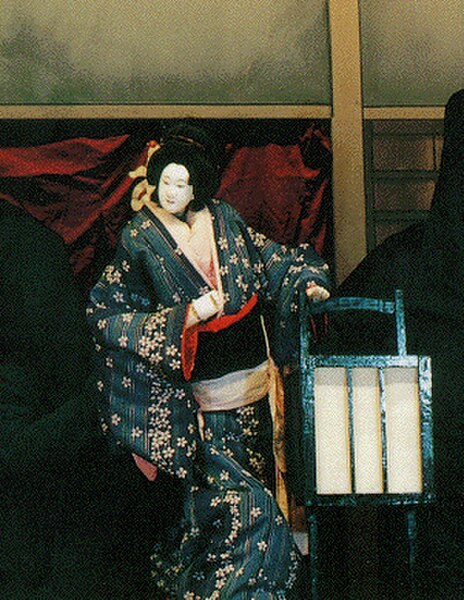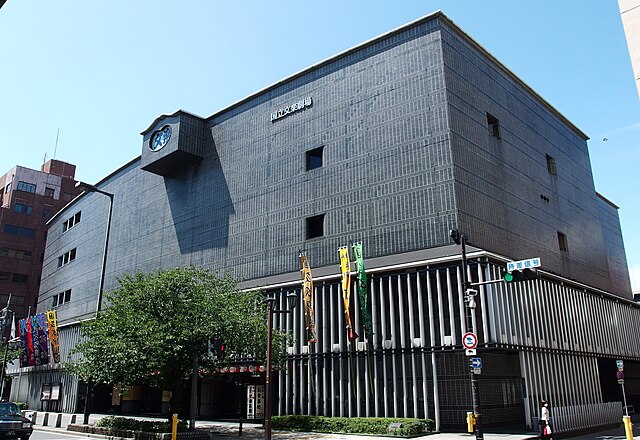Chikamatsu Monzaemon was a Japanese dramatist of jōruri, the form of puppet theater that later came to be known as bunraku, and the live-actor drama, kabuki. The Encyclopædia Britannica has written that he is "widely regarded as the greatest Japanese dramatist". His most famous plays deal with double-suicides of honor bound lovers. Of his puppet plays, around 70 are jidaimono (時代物) and 24 are sewamono (世話物). The domestic plays are today considered the core of his artistic achievement, particularly works such as The Courier for Hell (1711) and The Love Suicides at Amijima (1721). His histories are viewed less positively, though The Battles of Coxinga (1715) remains praised.
Chikamatsu Monzaemon
Tomb of Chikamatsu at Kōsaiji temple
Statue of Chikamatsu Monzaemon at Amagasaki, Hyogo
Bunraku is a form of traditional Japanese puppet theatre, founded in Osaka in the beginning of the 17th century, which is still performed in the modern day. Three kinds of performers take part in a bunraku performance: the Ningyōtsukai or Ningyōzukai (puppeteers), the tayū (chanters), and shamisen musicians. Occasionally other instruments such as taiko drums will be used.
The combination of chanting and shamisen playing is called jōruri and the Japanese word for puppet is ningyō. It is used in many plays.
The character Osono, from the play Hade Sugata Onna Maiginu (艶容女舞衣), in a performance by the Tonda Puppet Troupe of Nagahama, Shiga Prefecture
Puppet master with female doll
Scene from Date Musume Koi no Higanoko (伊達娘恋緋鹿子) depicting Yaoya Oshichi climbing the tower
National Bunraku Theater in Osaka







